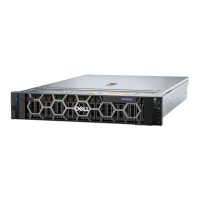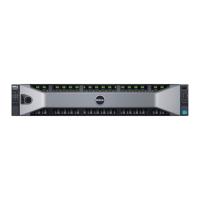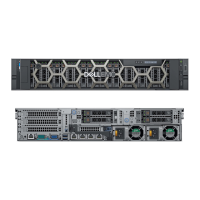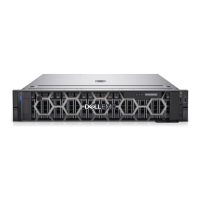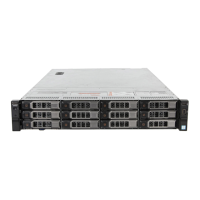Next steps
1. If removed, install the air shroud.
2. Follow the procedure listed in the After working inside your system.
Installing the liquid cooling heat sink
Prerequisites
Never uninstall the heat sink from a processor unless you intend to replace the processor or system board. The heat sink is
necessary to maintain proper thermal conditions.
1. Follow the safety guidelines listed in the Safety instructions.
2. Follow the procedure listed in the Before working inside your system.
3. If installed, remove the air shroud.
4. If installed, remove the processor dust cover.
5. For new heat sinks, refer to Installing the heat sink step 1 and 2 for applying the thermal grease.
NOTE: Ensure anti-tilt wires on the DLC module are in the unlocked position.
NOTE: The recommended maximum operating pressure is 15 psi (diverter opens at 15 psi).
Steps
1. Align the screws on the liquid cooling heat sink with the standoff screws on the system board. Ensure that the liquid cooling
tubes and liquid detection cable are placed towards the rear of the chassis. Using a Torx #T20 screwdriver, tighten the
captive screws in the order that is mentioned below:
NOTE: The captive screw numbers are marked on the heat sink and are tightened to a torque value of 12.0 ± 1.2 lbf-in.
a. Partially tighten the captive screws 1 and 2 (approximately 3 turns).
b. Partially tighten the captive screws 3 and 4 (approximately 3 turns).
c. Tighten the captive screws 1 and 2 completely.
d. Tighten the captive screws 3 and 4 completely.
2. Ensure that the liquid cooling tubes leading towards the front of the chassis are placed between the DIMM slots and the
J_SL connectors. And the tubes leading towards the rear of the chassis are placed in between the DIMM slots and the relay
components.
NOTE:
Liquid detection cable must be placed underneath the cooling tubes to ensure it does not interfere with the PCIe
risers.
3. Route the liquid cooling tubes through the rear exit point next to the I/O function panel. Ensure the routing follows the
numbered labels on the tube and liquid cooling ring holder (1, 2).
4. Connect the liquid cooling detection cable to the RIO card connector.
5. Insert the rubber rings on the tubes on to the rubber holder.
6. Using a Phillips #1 screwdriver, tighten the captive screw on the liquid cooling ring holder to secure it in place.
NOTE: The numbers on the image do not depict the exact steps. The numbers are for representation of sequence.
156 Installing and removing system components

